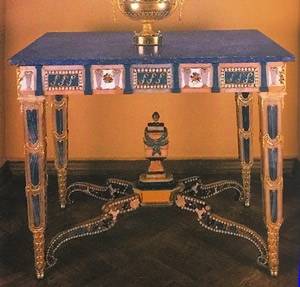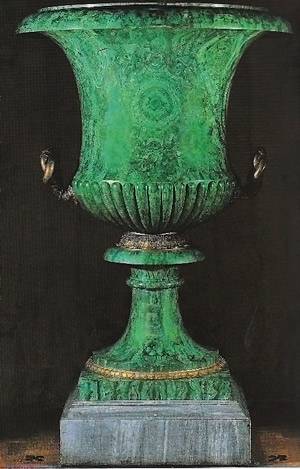Knowledge Center
Related Articles: Russian Furniture
Stone Cutting
Russian Furniture Styles - Stone Cutting
Stone-cutting is another Russian national art form which began in the middle of the eighteenth century. Malachite, Agate, Jasper, and Lazurite were often used. Blocks were sawn into slices then cut according to the pattern to form a pleasing design. Pieces were joined as near to invisible as possible. Bases were generally made of copper, iron, stone or marble. Mosaic techniques were used to mitigate scarcity of material or the problem of not having large enough pieces of stone.


Above top: One of a pair of tables in hard stones, gilt bronze and smalt with tops in lazurite from the Urals, made at Peterhof, c. 1790 (Catherine Palace, Pushkin)
Above bottom: A large malachite vase with bronze mounts, c. 1850 a fine example of malachite mosaic technique. The pieces, cut and assembled to create particular patterns, can be easily distinguished. (The Royal Collection, Windsor Castle)
Source: Russian Furniture The Golden Age 1780-1840, Antoine Chenevière